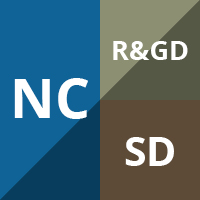
Pharmacological interventions for sleepiness and sleep disturbances caused by shift work
Abstract Background Shift work results in sleep-wake disturbances, which cause sleepiness during night shifts and reduce sleep length and quality in daytime sleep after the night shift. In its serious form it is also called shift work sleep disorder. Various pharmacological products are used to ameliorate symptoms of sleepiness or poor sleep length and quality. […]

Drug therapy for obstructive sleep apnoea in adults
Abstract Background The treatment of choice for moderate to severe obstructive sleep apnoea (OSA) is continuous positive airways pressure (CPAP) applied via a mask during sleep. However, this is not tolerated by all individuals and its role in mild OSA is not proven. Drug therapy has been proposed as an alternative to CPAP in some […]

Melatonin for non-respiratory sleep disorders in visually impaired children
Abstract Background Exogenous melatonin helps in regulating the circadian rhythm and is widely used for the management of sleep disorders in visually impaired children. Objectives The aim of the review was to assess melatonin therapy for treatment of non-respiratory sleep disorders in visually impaired children, with regard to improvement in sleep habit, sleep scheduling and […]

Treatment of obstructive sleep apnoea for chronic cough in children
Abstract Background Childhood obstructive sleep apnoea (OSA) is a disorder that is characterised by repeated episodes of partial or complete upper airway obstruction (UAO) during sleep that result in disruption of normal ventilation and sleep patterns. Chronic cough in children is a significant medical problem and in some situations warrants thorough investigation. There may be […]

Melatonin for the prevention and treatment of jet lag
Abstract Background Jet lag commonly affects air travellers who cross several time zones. It results from the body’s internal rhythms being out of step with the day-night cycle at the destination. Melatonin is a pineal hormone that plays a central part in regulating bodily rhythms and has been used as a drug to re-align them […]

Antidepressant drugs for narcolepsy
Abstract Background This is an updated version of the original Cochrane review published in Issue 1, 2008. Narcolepsy is a disorder of the central nervous system, the main symptoms of which are excessive daytime sleepiness (EDS) and cataplexy (an abrupt and reversible decrease in or loss of muscle tone, affecting the limbs or trunk or […]

Continuous positive airway pressure delivery interfaces for obstructive sleep apnoea
Abstract Background Continuous positive airway pressure (CPAP) is the mainstay of therapy for moderate to severe obstructive sleep apnoea (OSA). However, compliance with CPAP has been less than ideal. There are many different CPAP interfaces now available for the treatment of OSA. The type of CPAP delivery interface is likely to influence a patient’s acceptance […]

Continuous positive airways pressure for obstructive sleep apnoea in adults
Abstract Background Obstructive sleep apnoea is the periodic reduction (hypopnoea) or cessation (apnoea) of breathing due to narrowing or occlusion of the upper airway during sleep. The main symptom is daytime sleepiness and it has been suggested it is linked to premature death, hypertension, ischaemic heart disease, stroke and road traffic accidents. Objectives The main […]

Oral appliances for obstructive sleep apnoea
Abstract Background Obstructive sleep apnoea-hypopnoea (OSAH) is a syndrome characterised by recurrent episodes of partial or complete upper airway obstruction during sleep that are usually terminated by an arousal. Nasal continuous positive airway pressure (CPAP) is the primary treatment for OSAH , but many patients are unable or unwilling to comply with this treatment. Oral […]

Surgery for obstructive sleep apnoea in adults
Abstract Background Obstructive sleep apnoea/hypopnoea syndrome(OSAHS) is the periodic reduction or cessation of airflow during sleep. The syndrome is associated with loud snoring, disrupted sleep and observed apnoeas. Surgery for obstructive sleep apnoea/hypopnoea syndrome aims to alleviate symptoms of daytime sleepiness, improve quality of life, and reduce the signs of sleep apnoea recorded by polysomnography. […]

